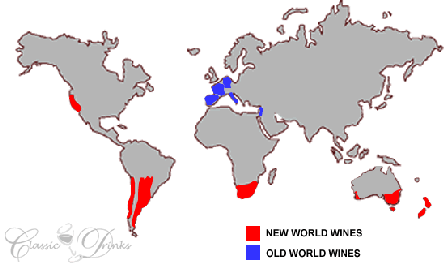The Difference Between Old World and New World
December 12, 2010Wine is already a complicated enough topic, and there is a good amount of lingo thrown around. One of the key terms that can confuse people is old world and new world. The difference between old world and new world wines, on the surface is fairly straightforward (with a lot of generalizations), but as you get a little deeper into the topic it can get more complex.
Old World Wines
Places like France, Austria, Germany, Italy and Spain. These countries have a long history and heritage of wine production and wines from these areas are classified as old world because of this heritage. Wines from the old world are stereotypically lower in alcohol
New World Wines
Countries such as USA, Australia, South America, and South Africa. These wines may not have the prestige or heritage normally associated with the old world, but have different things that will appeal to different people. New world wines tend to benefit from riper fruit because the conditions in which they are grown tend to be warm and sunny. The more sun the grapes get, the more sugar they produce, and the fruitier the wines tend to be. This is still a big generalization as wine-makers can manipulate their wine to create any style they like.
The Main Differences Between Old World and New World Wines
1) Think of Old World as being Europe, New World as being everywhere else.
2) New World wines are generally bolder and more “fruit forward” than their old world counterparts.
3) Prices are typically more competitive on New World wines, as they are trying to compete with the Old World. This can also depend on exchange rates.
4) The alcohol in Old World wines tend to be lower than New World wines (saying that, I’ve had plenty of wines from Europe with what is deemed as “high alcohol”).
This entry was posted in Facts. Bookmark the permalink. ← DIY Wine Bottle Christmas Lights Video Review of Cliff Raven Malbec →










